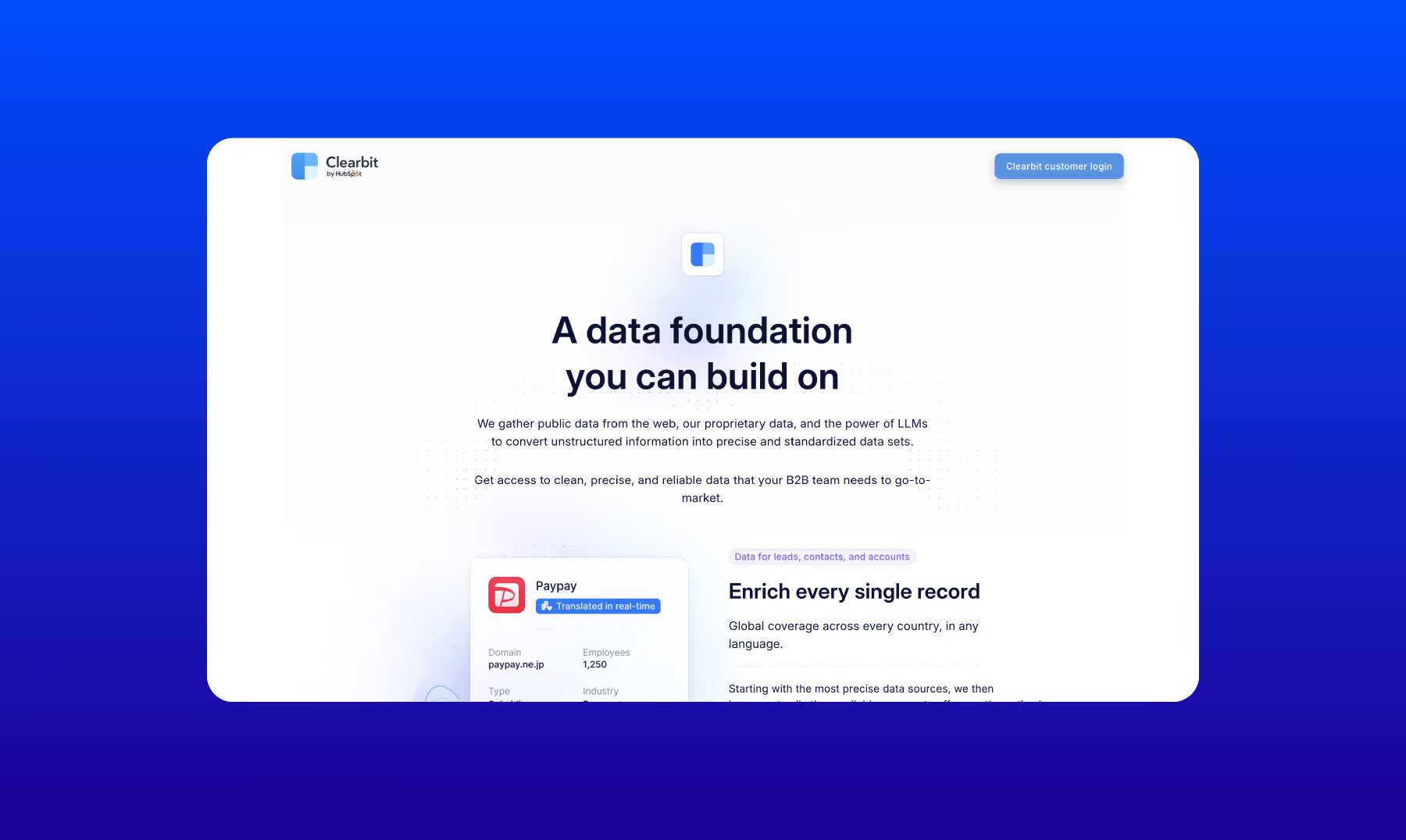How to Write Cold Emails That Work - 9 Proven Tactics


I always say cold email is more of an art than a science. Even if you have everything perfectly set up to send cold emails, it’s possible that your campaign lands flat on its face.
This is because writing a great cold email takes practice, testing, and lots of iteration. In fact, I would recommend that you begin cold emailing with the full expectation that it’s a long term investment. Start slow, find messaging that works, and scale from there.
But if you’re reading this, you’re probably looking for a quick way to identify what email copy works best…and you’ve come to the right place.
I’ve sent tens of thousands, if not hundreds of thousands, of cold emails and I’m going to share what I’ve found to work and what doesn’t. And at the end, I’ll share our golden template that will give you a high performing email that you can edit to make your own.
Let’s dive in!
Cold Email Guide: 9 Tips That Guarantee More Responses from Cold Emails
#1) Use Generic Subject Lines
The first step to a cold email is getting someone to open it. Without an open, there’s a 0% chance that you’ll get a reply.
I see it all the time where someone cold emails me and the subject line is long and is asking me for something and this just leads to low open rates.
If you want someone to open your email, you want to mimic a subject line that their co-worker or friend might send.
Coworkers often use subject lines like “Have you checked on this” or “Can you review” so when you send an email that feels like it came from a friend or colleague, your recipient is going to be far more likely to open the email.
Of course, it’s always best to personalize a subject line when you can but for most cold emails, you’ll want to stick with generic subject lines that are tried and true.
Here are a few example of generic subject lines:
- Quick Question
- {{FirstName}}, quick question
- Reconnecting here
- Running this by you
#2) Use Their First Name
The first step to writing the body of a cold email is the easiest: Always use the recipient's first name at the beginning of your email. Don’t say “Hello there” or “Hi Zack Olivas,” you have to use their first name.
If you need help automating collecting the first name along with someone’s email address, check out the LeadLoft Prospector here.
#3) Personalize the First Line
You’ve probably heard someone mention cold email is all about personalization and to some degree they’re right. Personalized emails almost always have higher response rates and are practically guaranteed to yield better results.
The downside? They take a lot of time and skill to compose.
So how should you personalize a cold email? Well, we love to personalize just the first line. There are two goals we are trying to achieve here:
The first is to prove the email is not a bulk or mass email. By showing that you put effort into the email, the prospect is far more likely to put effort into responding.
The second goal is to start off on a good note. We achieve this by complimenting the prospect. Here are a couple examples:
Notice you just raised a series A from <Investor>, congrats. That’s major!
Came across {{LeadName}} and your site is awesome, love the modern blue and white. Really well done.
Regardless of how you personalize your email, just do your best to start the email off on a good note and to convince the prospect that you put time into the email.
#3) Keep Your Email Short
People are busy and no one is going to take the time to read your company’s life story so keep your email short. Don’t exceed 5 sentences and if you can, keep the main body to 2 or 3 sentences max. The easier your email is to read, the easier it will be to respond to.
And yes, I understand that it’s hard to cram a ton of information into a short email but that’s why cold email is an art. Conveying a convincing message in a few words isn’t easy to do but if you can figure it out, your cold emails are almost certainly going to perform better.
#4) Use Casual Language
As tempting as it is to sound professional, it just makes you sound like you’re selling something. The first step to sales is to build a relationship and you can do this with a casual tone.
By coming off casual, your email will have a conversational tone to it, meaning it feels like you’re talking face to face. This gives the email a more human feel increasing the odds that they’ll respond.
You’ll hear me say this multiple times, but most cold emailing is about showing your prospect that the email was not automated and using professional language just sounds automated. It’s hard to explain but I’m sure you can agree that there are just some emails that when you read them, it’s very clear that the email was sent in bulk using some kind of email automation.
A great tip is to test this by reading your email out loud. Does it sound sales-y? If so, edit it and repeat the test until it sounds like something you might say in a conversation.
#5) Avoid Jargon
Jargon is a horrible habit to form and we’re all guilty of it. Whenever you spend too much time in a single industry, you begin to understand the jargon and begin using it on a daily basis.
The vast majority of prospects that you approach will only be confused by jargon so you have to be really careful when using it.
You can test this by reading your email to a friend or child. Do they understand what you're saying? If not, your email needs some work. Don’t explain to them what they’re not understanding, simply rewrite your email and try again. You can think of it like a bad joke: if you need to explain your email, it’s probably not a great email.
#6) Avoid Buzzwords
It can be easy to rely on buzzwords when writing a cold email but most buzzwords are generic and don’t explain why you’re special. After all, there’s thousands of companies using the same technology.
So, it’s fine if your company is using AI or blockchain but don’t rely on these points to get a reply. Instead, focus on the benefits that this technology can provide. Here is an example of a real cold email that I received and my edit:
Before:
Our transformative human-powered, AI-Driven ‘Infrastructure as a Solution’ is helping increase engagement rates by 211-476% and conversion rates by 88-327%…
My Edit:
We help increase revenue by contacting your customers at times when they’re most likely to make a purchase. So far our customers have been seeing 3 times more sales as a result.
After reading both, which are you more likely to respond to? I’m guessing you chose the second email that clearly explains the specific benefit that you can expect.
#7) Provide Value
When you’re reaching out to someone cold, you need to ask yourself “Why would they hop on a call with me?”
You either need to solve a massive problem where they're dying for a solution or you need to provide something valuable. I usually opt to provide value by sharing our own internal sales workflow. Obviously that’s hugely valuable and when we hop on a call, I’ll actually go through our sales process and share it with them. By sharing this, it’s actually worth our prospects time to hop on a call with me.
If you feel that your product is valuable but it’s difficult to make that clear over an email, you can always fall back on buying them a coffee. In this case, you would literally offer to send them a gift card to Starbucks. If you’re curious how this works, check out Caroo or WeGift.
Providing value is one of the hardest aspects of cold email so we’ll cover it further in our email template below.
#8) End With a Question
If you send a cold email, you NEED to have a call to action. This could be something as broad as simply asking if they’re interested or it can be as specific as asking if they’re free to meet on a specific day at a specific time.
Regardless of your ask, just be sure to end your email in a way that requires a response.
You can take this to the next level by making sure the email is easy to respond to. Sometimes a question can require research like:
Is there a time next week that works for you to meet?
A better alternative would be to use something like:
I blocked off 3:30pm PT tomorrow just in case. Does that work for you?
In this second call to action, it’s extremely easy for the prospect to book a meeting. They can reply with a simple “Yes, that works.” and boom! You have a meeting.
If you’re looking for more call to actions to test, Cience built a great list that you can find here.
#9) Space Out Your Email
A lot of what we’ve covered is related to the content of an email but the layout is equally as important. Be sure to add additional lines between paragraphs so your email is easy to read. For example:
No Spacing:
Hi {{FirstName}},
Came across LeadLoft and wanted to see if you’re looking for additional engineers to hire. We help tech companies hire engineers across seas for a fraction of the cost of local engineering talent. Let me know if this is something you’re interested in, happy to share how it works. Free sometime this week to hop on a call?
Best,
Jane
With Spacing:
Hi {{FirstName}},
Came across LeadLoft and wanted to see if you’re looking for additional engineers to hire.
We help tech companies hire engineers across seas for a fraction of the cost of local engineering talent. Let me know if this is something you’re interested in, happy to share how it works.
Free sometime this week to hop on a call?
Best,
Jane
Clearly the second is the better of the two emails. So whenever you write your email, make sure that the email is spaced out and easy on the eyes.
The Perfect Cold Email Template
Below is a short cold email template that we love. It checks off all the boxes from the above list and is guaranteed to perform well. Go give it a test and let us know how it works.
Hi {{FirstName}},
Came across {{Lead.Name}} and noticed <Compliment OR write something to show it's personalized>.
We help <soft pitch> so I figured it made sense to connect. We actually just <half sentence case study>. Let me know if this is something you’re interested in. If not, happy to connect and <provide value>.
Mind if I send over a few times?
Best,
{{Sender.FirstName}}
Download a List of Cold Email Templates

If you’d like to see more cold email examples, you can download a whole list of sales email templates here.
Wrapping Up
At the end of a day, writing a cold email is simple. You just have to fight the urge to fill your email with unnecessary buzzwords and long paragraphs. If you read through this post a few times and stick to our golden template above, you’re going to find a high performing email in just a couple weeks.
In the meantime, if you’re looking for a platform to find contact info and send cold emails, check out LeadLoft.



.avif)


